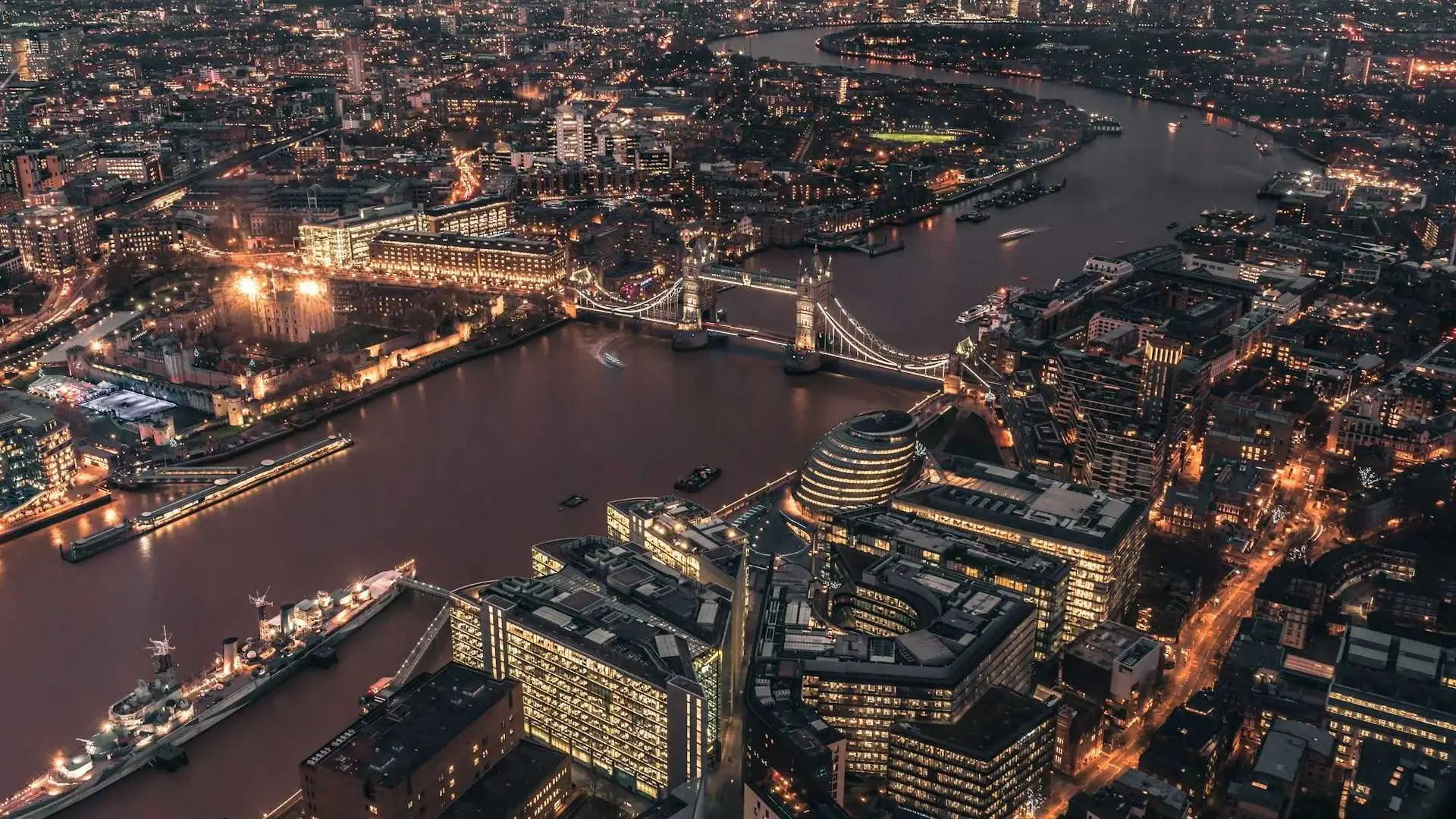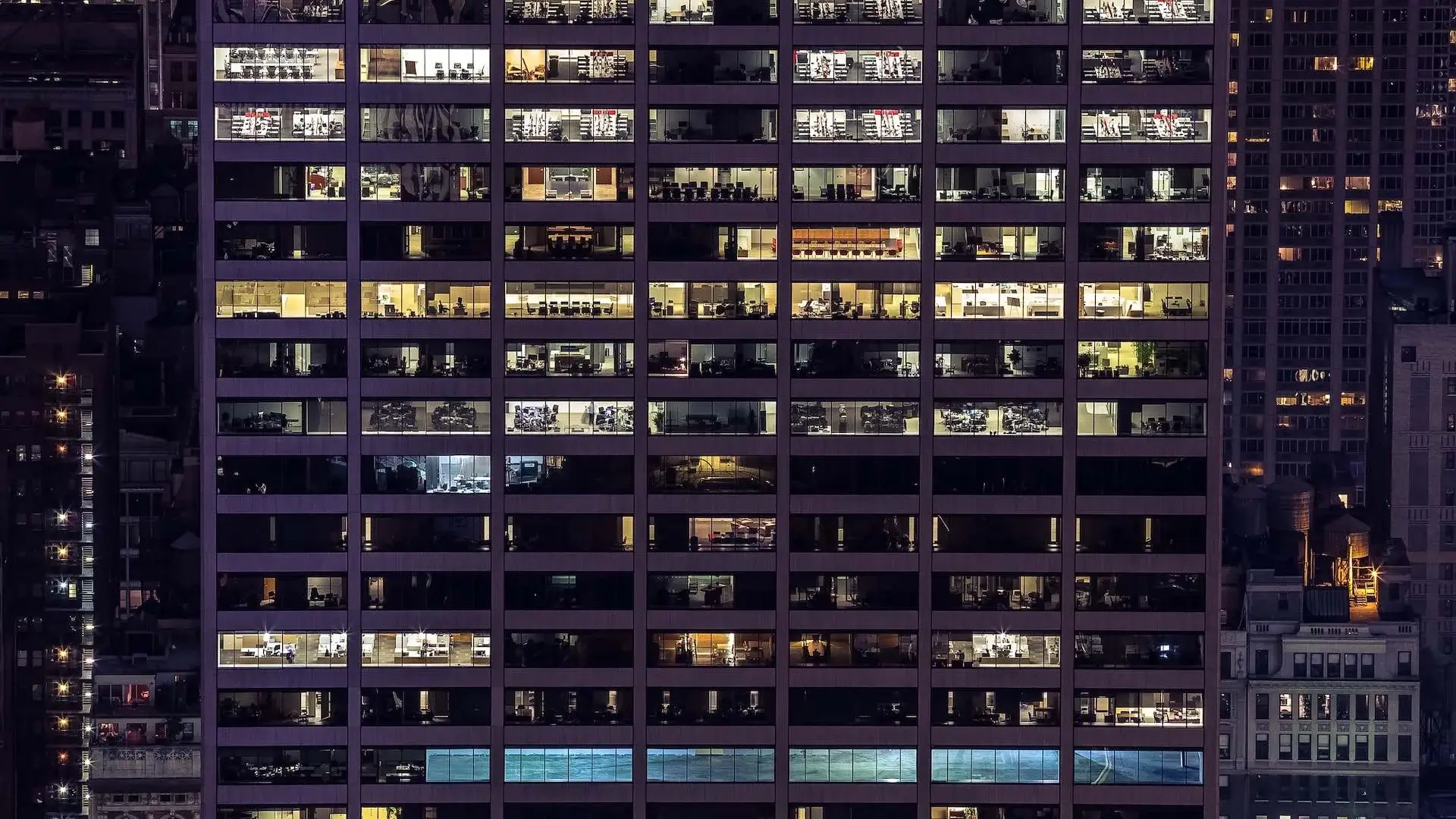T-Word Trends: Fluorescent light bans, ESOS Phase 3, and dark sky regulations

As the winter months roll in, the importance of lighting is drawn into acute focus. So far, we’ve seen Chile issue new dark sky regulations, a ban on fluorescent lighting commencing in 2027, and a spotlight on Daylight Awareness Week. In this edition of T-Word Trends, we explore the month’s latest news as well as what’s ahead on the horizon.
The second week of November marked Daylight Awareness Week, which looks at the relationship between humans and sunlight: How does natural light impact our wellbeing? And, in turn, how can we design our built environments to supplement natural light as the days shorten throughout the winter? Luckily, the answers are quite simple. LEDs and smart lighting offer HR teams and facilities managers a quick win for keeping the ‘winter blues’ at bay. A lighting system that takes a wide range of wellbeing aspects into account can improve workplace health and productivity.
On a similar vein, The Royal Institute of Chartered Surveyors (RICS) and wellbeing-focused architecture firm Ekkist have collaborated on a new guide that focuses on designing, delivering, and managing healthier buildings. It explores environmental factors that affect wellbeing. This includes noise, lighting, and air quality. Sections 3.7 and 3.8 of the guide mention daylight and lighting, respectively, pointing to lighting as a vital component in the healthy buildings equation.
Fluorescent lights: global phase-out by 2027
Meanwhile, at the Minamata Convention on Mercury Fifth Conference of Parties (COP5), representatives from 147 nations made a historic decision to globally phase out fluorescent lighting by 2027. The move aims to address the environmental and health hazards associated with mercury, a potent neurotoxin present in fluorescent lamps. The decision, which focuses on linear fluorescent lamps (LFLs), will effectively put an end to the fluorescent lighting industry, except for specific applications like transportation.
David Kapindula, Minamata COP3 President and Africa Region expert, said “The decision to phase out mercury-based fluorescent lighting will have unprecedented benefits in combatting the triple planetary crisis of climate change, air pollution, and biodiversity loss. Such actions would not have been possible without the spirit of cooperation demonstrated by Parties at this Minamata COP5.”
The transition is expected to boost the widespread adoption of energy-efficient LEDs, which are on average 40% more energy-efficient than fluorescents. The benefits of a complete shift to LEDs include a significant reduction in CO2 emissions, elimination of mercury pollution, and substantial savings on electricity bills.
ESOS Phase 3 deadline and the lighting industry
The Energy Savings Opportunity Scheme (ESOS) is a government initiative aimed at improving energy efficiency and reducing greenhouse gas emissions within large organisations.
With the recent extension of the ESOS Phase 3 deadline, moved to 5th June 2024, the Environment Agency (EA) is set to introduce new requirements that will further enhance the scheme. Requirements include alteration of the de minimis rule, a new submission template, and sharing of report findings with subsidiaries. To learn more, we’ve broken down everything you need to know about ESOS for the lighting industry.
Chile adopts new national dark skies regulation
A new lighting standard, issued 18 October 2023, will reduce light pollution across Chile. Its purpose? To protect biodiversity, human health, and to preserve astronomical observations. As human settlements have expanded across the globe, it is estimated that over 80% of the world’s population is living under light-polluted skies. All the more reason for dark sky regulations to be in place, urges by the Chilean Ministry of the Environment. The subject of dark skies – and how to protect them here in the UK - is a topic we will return to in future T-Word blogs.
Looking forward…
On the horizon, be sure to keep an eye out for the British Council for Office’s (BCO) latest ‘Guide to Office Fit Out’ set to be published by the end of 2023. The guide aims to address how the UK’s offices need to evolve to improve sustainability and employee wellbeing. Lighting is set to play a key role amongst the major themes.
Further afield, The National Retrofit Conference is set to take place alongside Futurebuild 2024. The National Retrofit Conference will serve as a forum for discussing the difficulties associated with retrofitting the stock of existing buildings and developing a blueprint for fundamentally altering our approach to retrofitting. The conference's objectives are to encourage clients, contractors, and the larger supply chain to follow suit by offering guidance and inspiration.


